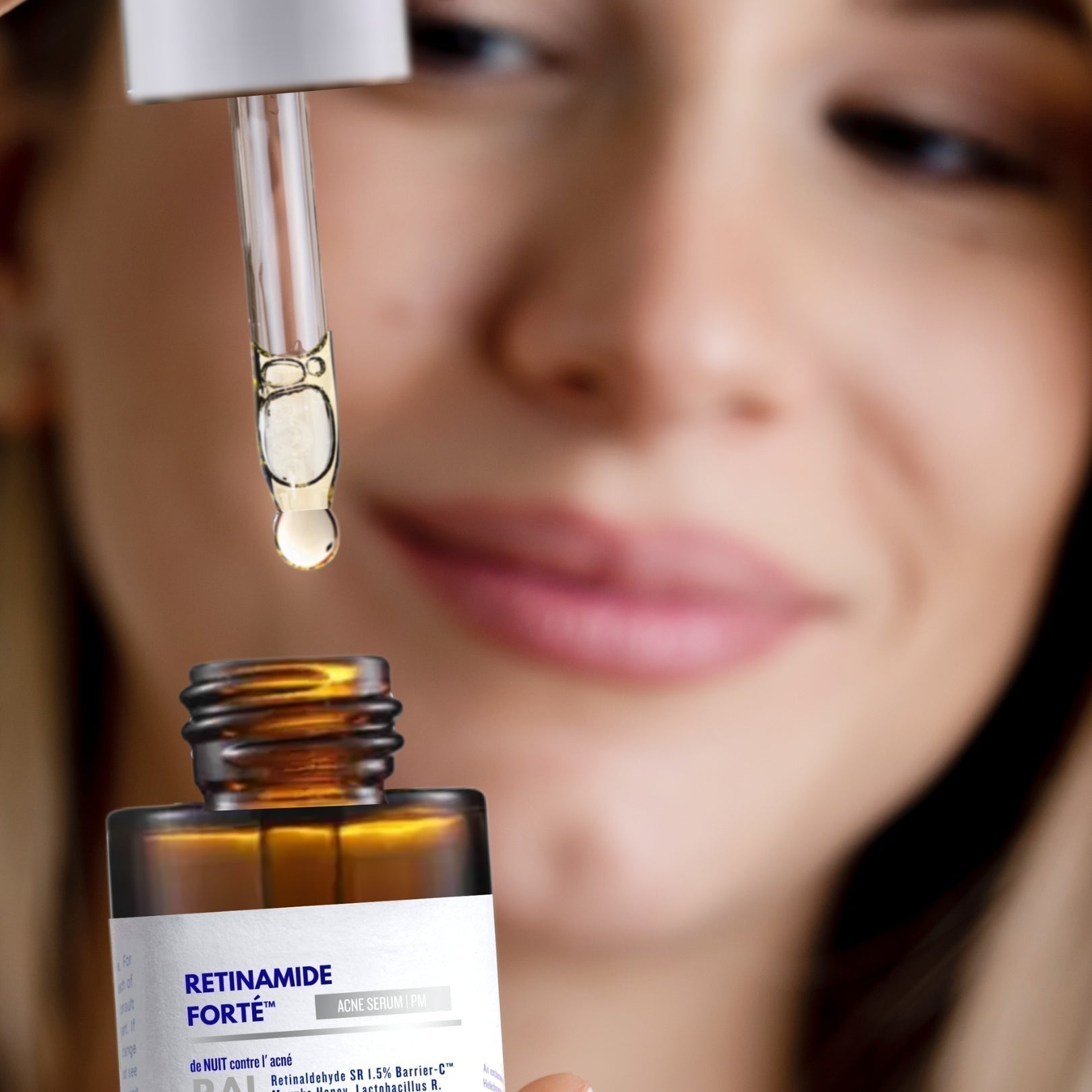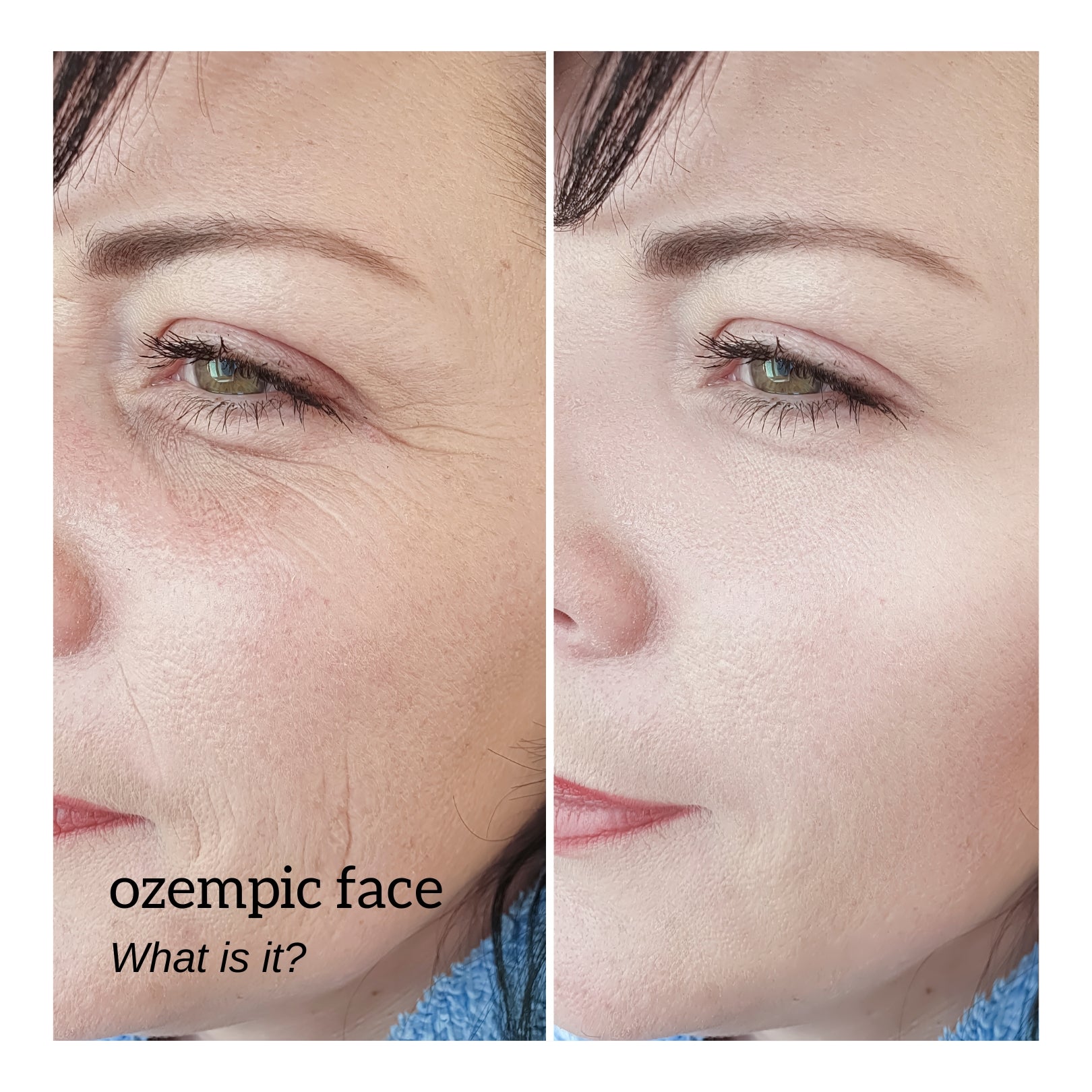Retinaldehyde vs Retinol
Retinoid is the umbrella term encompassing all the different forms of Vitamin A.
You may have heard of Retinyl Palmitate, Retinol, Retinaldehyde and Tretinoin. These all belong to the Retinoid family. They also need to be converted to retinoic acid to have anti-ageing benefits (except for tretinoin, which is why it is prescription only).
Retinoic Acid is the active form of Vitamin A and is the key to unlocking the retinoic receptors. Once Retinoic Acid binds to its receptors, this turns on a cascade of cellular reactions to improve collagen production and skin elasticity, reduce fine lines and increase cell turnover.
In this article, we will explore the differences between Retinal (also known as Retinaldehyde) and Retinol.
Retinal or Retinaldehyde
Retinal (also known as RAL in scientific journals) is the abbreviated name for Retinaldehyde. Retinal is not a spelling error for Retinol.
1. Studies show Retinaldehyde works 11x faster compared to Retinol of the same strength.
Retinaldehyde is a precursor of Retinoic Acid and requires one conversion to become Retinoic Acid. For this reason, their effects are seen much more quickly compared to Retinol. Retinol requires two conversion steps to become Retinoic Acid.
Where speed and effectiveness is a priority, Retinaldehyde is superior to Retinol.
2. Retinaldehyde has antibacterial properties.
Studies show Cutibacterium acnes (formerly known as Propionibacterium acnes), is sensitive to Retinaldehyde, making Retinaldehyde ideal for acne-prone skin.
3. Retinaldehyde is the most gentle of all the retinoids.
Retinaldehyde act on cells that are actively dividing. This unique feature allows Retinaldehyde to be better tolerated compared to other Retinoids, including tretinoin. This also makes it ideal for sensitive skin.
Retinol
Retinol has been around for much longer and is cheaper to source and easier to formulate. Studies show Retinol is 20x less potent than Tretinoin and 11x less potent compared to Retinaldehyde. Due to its irritating profile, we recommend using Retinol with caution for those with sensitive skin or choosing a formulation that uses controlled-release Retinol.
References:
- Antiageing effects of Retinoid Hydroxypinacolone Retinoate on skin models. Journal of American Academy of Dermatology. Published September 2018. Available from: https://www.jaad.org/article/S0190-9622(18)31012-0/fulltext
- Retinoids in the treatment of skin aging: an overview of clinical efficacy and safety. Journal of Clinical Interventions in Aging 2006:1(4) 327–348. Available from: https://www.ncbi.nlm.nih.gov/pmc/articles/PMC2699641/pdf/cia-1-327.pdf
- Belyaeva, O et al. Generation of Retinaldehyde for Retinoic Biosynthesis. Journal of Biomolecules. 2020 Jan; 10(1): 5. https://www.ncbi.nlm.nih.gov/pmc/articles/PMC7022914/
- Babamiri, K et al. Cosmeceuticals: the evidence behind retinoids. Aesthetic Surgery Journal, Volume 30, Issue 1, January 2010, Pages 74–77.
- Bjerke, D et al. The Vitamin A ester Retinyl Propionate has a unique metabolic profile and high retinoid-related bioactivity over retinol and retinyl palmitate in human skin models. Journal of Experimental Dermatology. 2021 Feb;30(2):226-236. Accessed December 12, 2022. DOI: 10.1111/exd.14219



